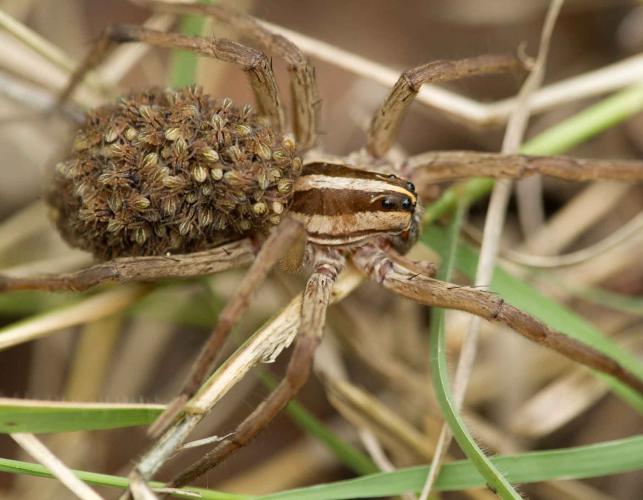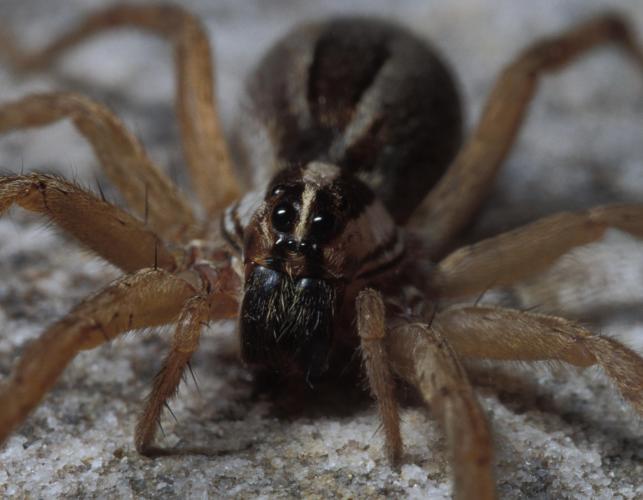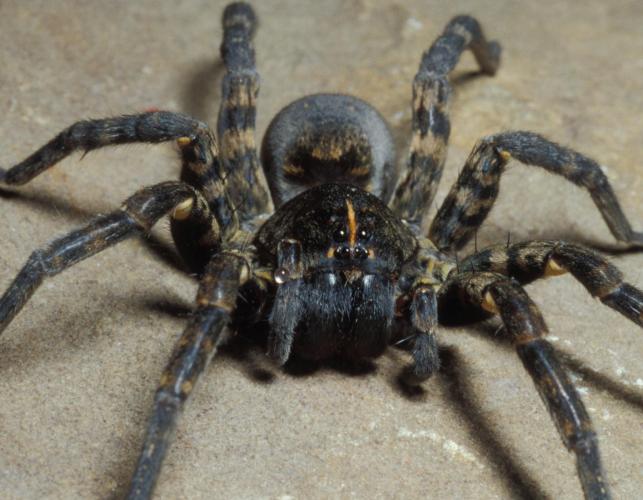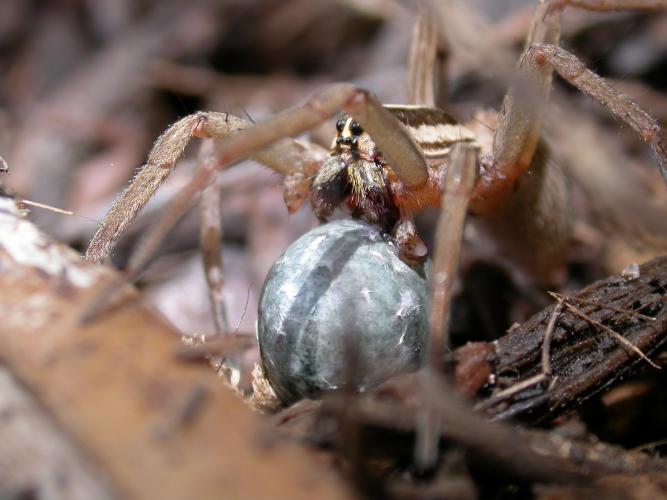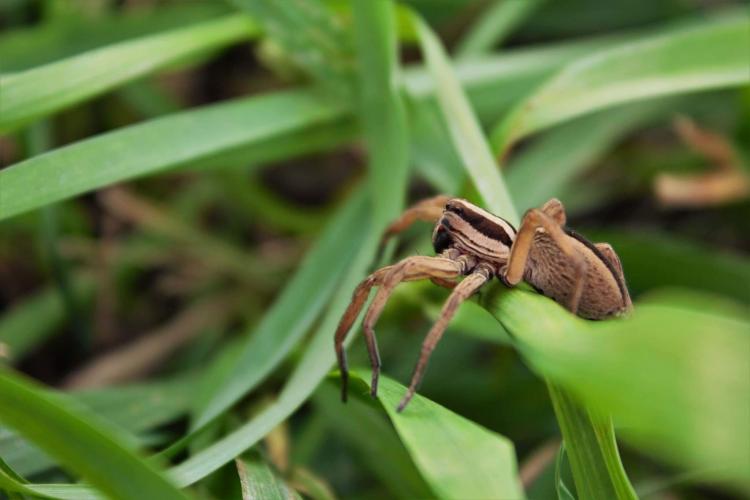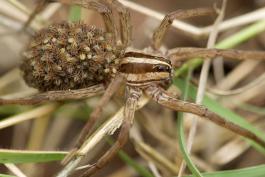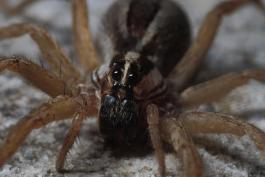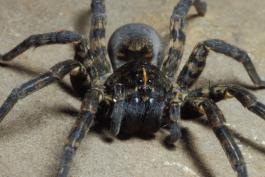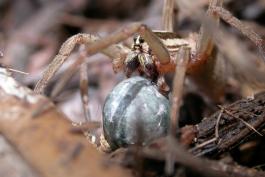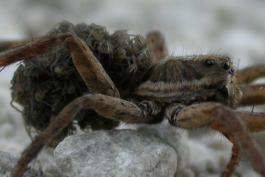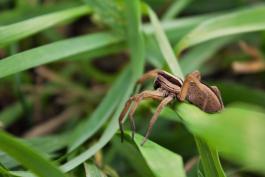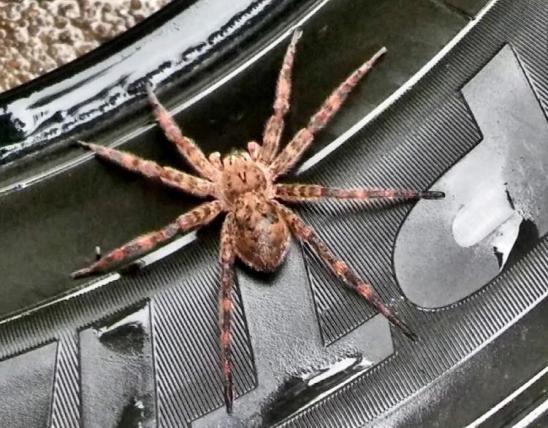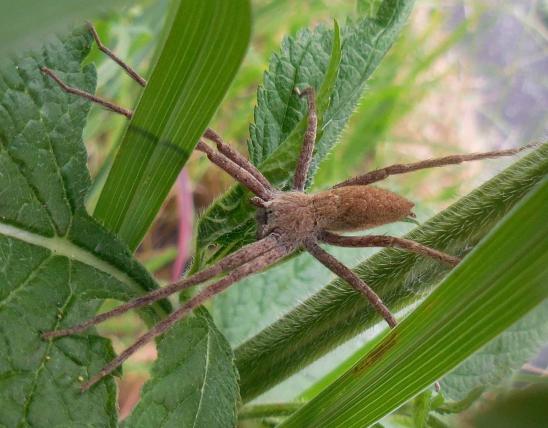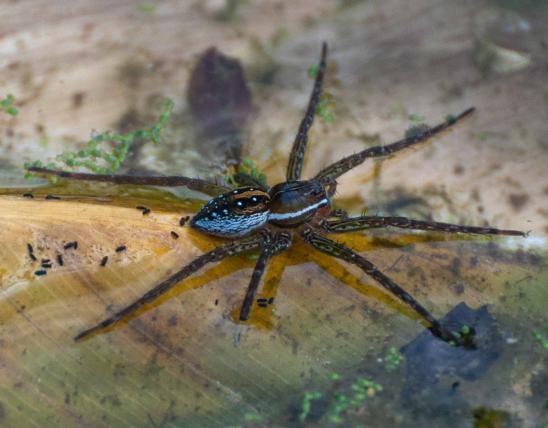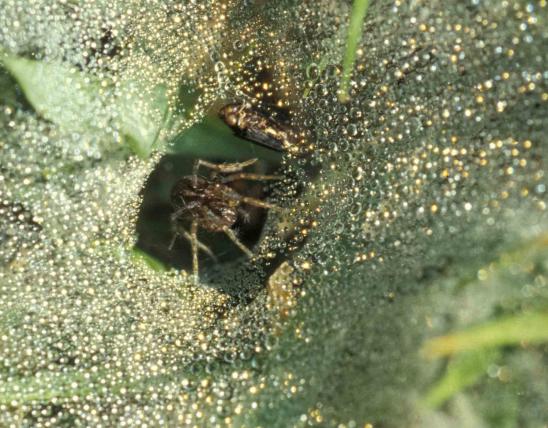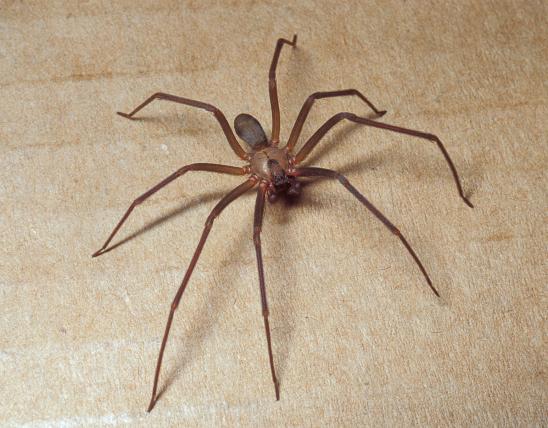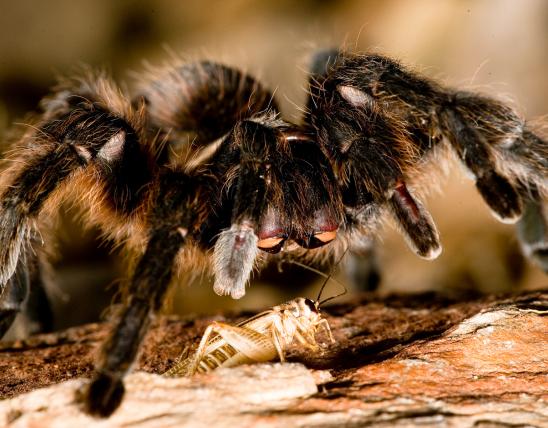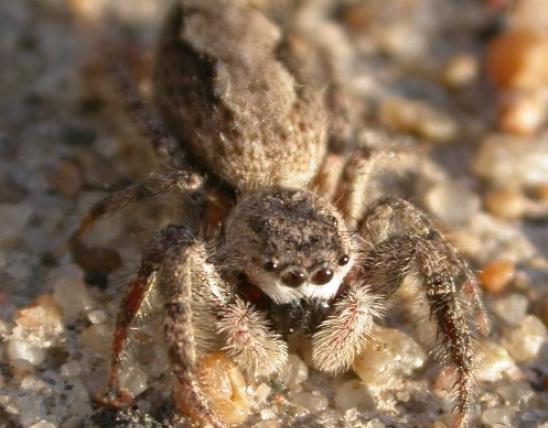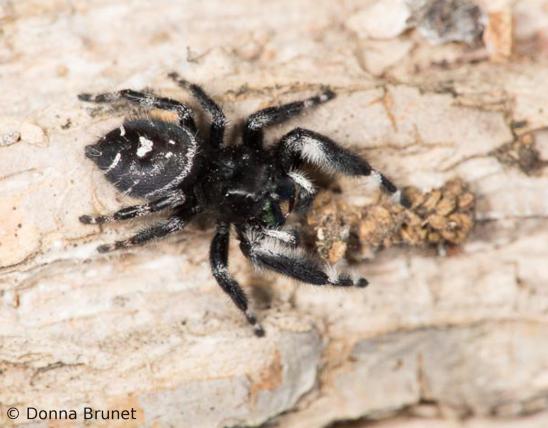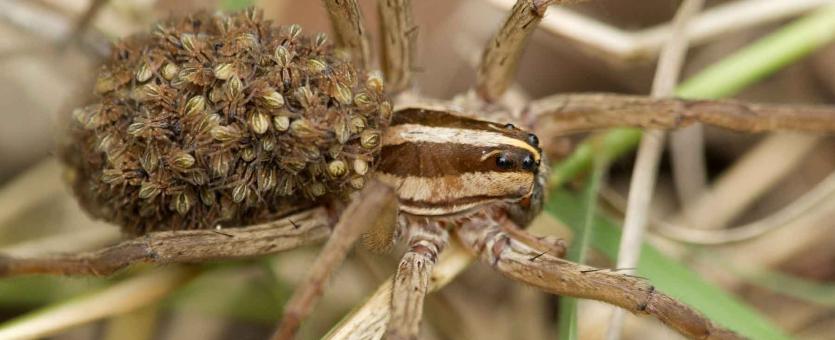
Wolf spiders are members of the family Lycosidae. These are athletic spiders that don’t spin webs to catch their prey; instead, they run it down. They have long legs and are usually gray, brown, black, or tan with dark brown or black body markings (especially stripes).
A female wolf spider carries her egg sac in a unique way: She attaches it to her spinnerets at the bottom rear of her abdomen. Later, she carries her babies on her back.
The eye configuration is similar to that of jumping spiders: The two center eyes of the top row are enlarged. But unlike jumpers, wolf spiders have a row of four small eyes below the four larger ones. Also, wolf spiders run smoothly over the ground and often hunt at night, while jumpers hunt in plants during the day, move jerkily, and jump great distances.
Similar species: Tarantulas are much larger and heavier. Fishing spiders carry their egg sacs in their jaws, swim in and walk on water, don't carry their babies on their backs, and don't have the two large forward-facing eyes.
Length (not including legs): from ¼ inch to 1 inch (varies by species; males are usually smaller than females).

Statewide.
Habitat and Conservation
These solitary, wandering spiders live in a variety of ground habitats: stream edges, gravel or sand bars, low vegetation, and woodland leaf litter. Some dig burrows or tunnel into natural cavities under flat rocks or logs; some have no home at all. Those in the genus Pardosa seem to prefer moist habitats or places near water. The rabid wolf spider (Rabidosa rabida) (which is absolutely not rabid!) commonly hides in leaf litter and sometimes gets into houses.
Food
Ground-dwelling insects and other spiders make up the bulk of their diet. Wolf spiders, with their excellent vision and excellent running abilities, chase down and grab their prey. Also, they can hold still and wait for insects to crawl near enough to catch. They do not spin webs to catch their prey. Wolf spiders can climb short distances up tree trunks and other objects. They have excellent night vision. If you shine a flashlight at them at night, their eyes shine back at you like a cat's.
Status
This family includes many of the most common spiders in Missouri as well as worldwide.
Life Cycle
The female wolf spider attaches her pea-sized egg sac to her spinnerets and carries on normal life with the sac held in this manner. She may exhibit aggressive behavior when carrying her egg sac and searches diligently, even frantically, if separated from it. After the spiderlings emerge from the casing, they climb onto her abdomen and remain there for up to two weeks or more, until they are ready to be on their own. Some wolf spiders can survive for nearly two years.
Human Connections
Wolf spiders eat many insect pests. Although they can bite if provoked, the bites of North American wolf spiders are harmless. Researchers study the parenting behavior of wolf spiders. The great French naturalist J. Henri Fabre wrote amusing stories of his experiments with wolf spiders.
Ecosystem Connections
Although they are fierce predators of insects and other small creatures, wolf spiders themselves are an important food for small lizards, insectivorous mice, shrews, and turkeys and many other birds.
